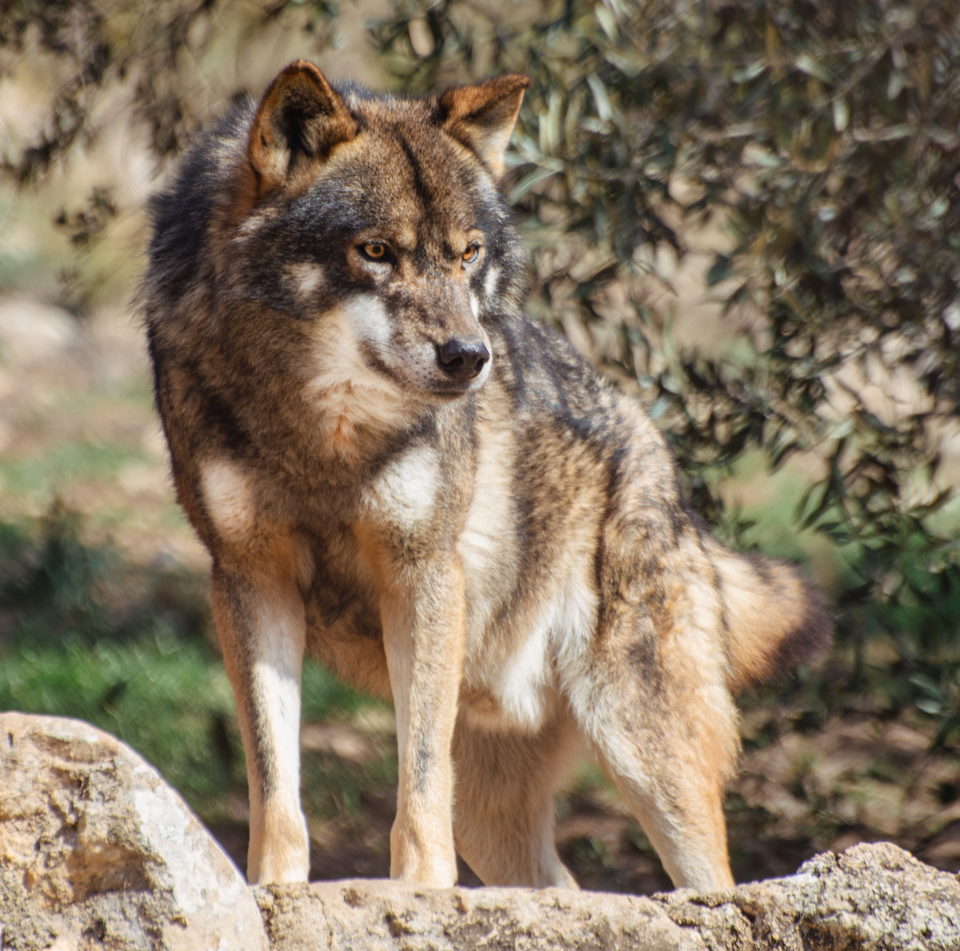Human persecution is the main cause of wolf mortality, according to a study led by the Doñana Biological Station
The research demonstrates that wolf deaths due to human actions are added to those from natural causes, ultimately compromising the conservation status of the species

Iberian wolf (Cansi lupus signatus). Photo: Francisco Javier Carmona Villegas
A scientific team led by the Doñana Biological Station (EBD-CSIC) has for the first time analyzed the causes of mortality for the grey wolf (Canis lupus) across the entire Northern Hemisphere. The study, published in the journal Mammal Review, shows that the vast majority of wolf deaths are linked to human activity, primarily legal and illegal hunting.
“Our study reveals, that 74% of wolf deaths in Europe and North America are attributable to human actions, primarily legal and illegal hunting, and to a smaller degree, road accidents. This highlights the intense persecution the species faces in humanized areas and the inherent risk of coexisting with us,” says Ana Morales-González, the lead author and a postdoctoral researcher at the Doñana Biological Station.
In collaboration with the University of León and the University of Oviedo, the study compiles information from 140 scientific analyses throughout the Northern Hemisphere. This extensive data collection creates a global reference framework and a standardized database that will enable better research and more effective conservation policies for this key carnivore.
“Our study redefines previous debates surrounding wolf mortality and provides a solid, evidence-based foundation for making management and conservation decisions,” adds Morales-González.
60% of the deaths are due to legal and illegal hunting
The study's results show that approximately 60 percent of wolf deaths are a direct consequence of the species' persecution through legal and illegal hunting. In Europe, mortality due to human causes climbs to 86 percent, while in North America it stands at 66%. This very high percentage means that natural deaths—those associated with aggression between individuals, disease, or starvation—are reduced to a very low rate, particularly on the European continent.
The analysis also shows that wolves that leave their natal group to form a new one —typically the youngest individuals— are the most vulnerable to mortality. This is because they must cross unfamiliar territories that may have a strong human presence.
The alarming state of wolf conservation
The research provides evidence that wolf deaths due to human activity add to those caused by natural factors like illness, fights between wolves, and famine. Morales-González states, "The overall mortality rate the species suffers is simply excessive, and we should remember that the wolf plays a key role in its ecosystems".
Additionally, the research team emphasizes that allowing legal hunting can have indirect effects on illegal mortality. “When hunting is authorized, it sends a negative message to society about the value of wolves, which leads to an increase in illegal deaths,” adds Morales-González.
Even though wolves have successfully expanded in certain European countries over the past few decades, the species' status is still worrying. Morales-González points out that "In the majority of the continent, the Iberian Peninsula included, the conservation status is adverse. This underscores the necessity to not relax, but to intensify, protective measures for wolves across Europe and North America, including the Iberian Peninsula".
The study was funded by the Ministry of Science and Innovation, the Agencia Estatal de Investigación, European FEDER and ESF+ funds, and the Junta de Andalucía.
Reference
Morales-González, A., Ruiz-Villar, H., Quevedo, M., Fernández-Gil, A., Paniw, M., & Revilla, E. (2025). Patterns and Determinants of Mortality in Grey Wolves (Canis lupus). Mammal Review, e70015. https://doi.org/10.1111/mam.70015